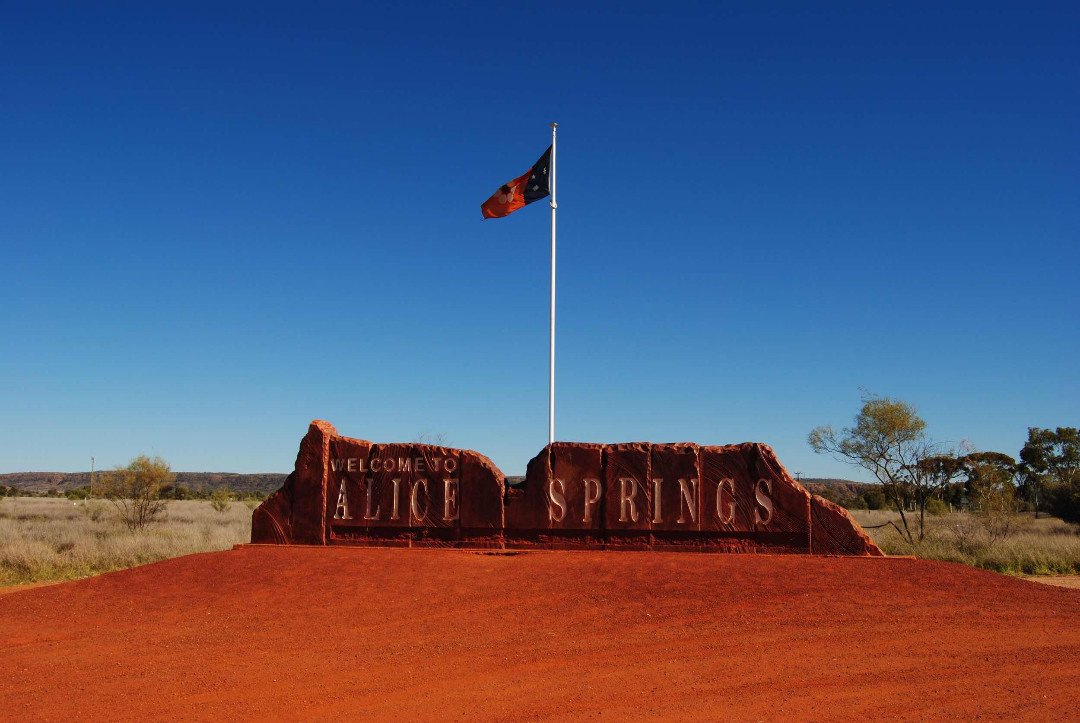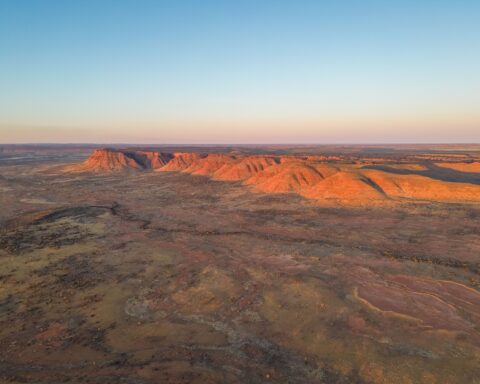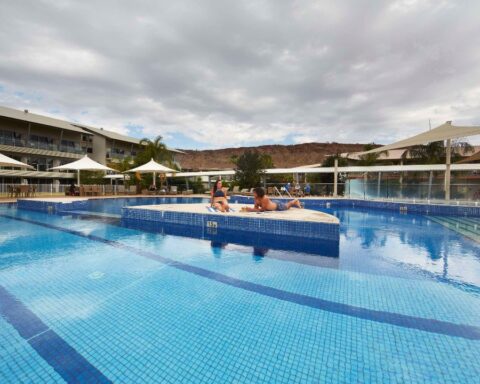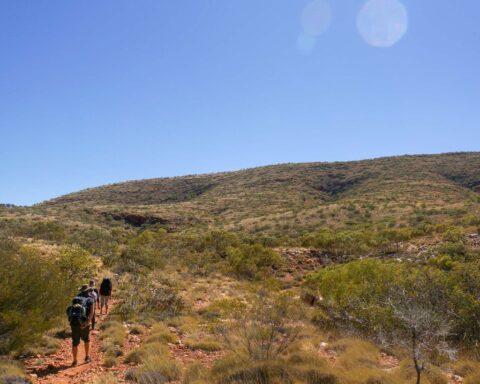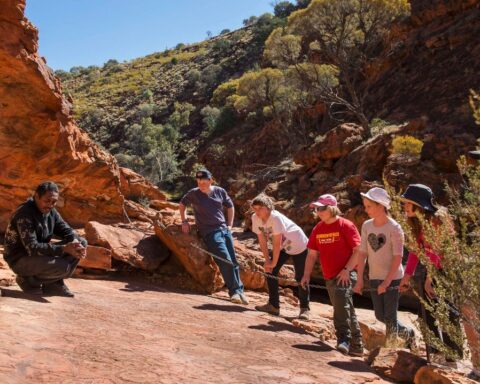Alice Springs may be a small town, but it is often regarded as the beating heart of Australia’s Red centre. It is a place of nature, wildlife, culture, sacred sites, art, and history. You may be surprised by how much there is to do in the town, however, it is also a perfect base to explore the spectacular wonders of the outback such as the MacDonnell Ranges, home to the Larapinta Trail, and stunning national parks including the iconic Uluru-Kata Tjuta National Park. Alice Springs also hosts a vibrant calendar of quirky festivals and events. If you’re visiting for the first time, here’s everything that you need to know.
How to get here
Alice Springs is located in the Northern Territory, halfway between Darwin and Adelaide, however, it’s a long way from both cities. There is an airport located 15KM south of the town centre, or approximately a 10-minute drive. You can catch a direct flight from most Australian capital cities, and take a taxi or shuttle from the airport into town.
It is also possible to drive to Alice Springs without needing 4-wheel drive. The upside to this is that it can work out cheaper, and you can enjoy an exciting outback road trip. However, be aware that it will take multiple days to get here from any Australian major cities, and you will need to come prepared as it can be a fair distance between amenities such as shops and gas stations.
A third option is the legendary Ghan train, which runs twice per week between Adelaide and Darwin, stopping in Alice Springs. This takes approximately 24 hours, whichever city you are travelling from.

Getting around Alice Springs
If you have brought a car, be aware that some of the national parks and day trips in the ranges are only accessible with 4-wheel drive and an experienced driver. If you have not brought a car, you can hire a car or bicycle at the airport or in town. Most things are within walking distance in the town, and there is a public bus available. If you want to venture to the MacDonnell Ranges or other places that are further afield without a car, a diverse range of day tours can be booked.
Climate
Alice Springs is no stranger to extreme temperatures. In summer, it’s not unusual for temperatures to soar above 40 degrees, however, in winter they can drop to single digits at night. It is extremely dry for most of the year, although the wet season in the far north brings some rainfall in the late summer. The most popular time to visit is between April – November when you can expect very little rainfall, clear skies, and temperatures reaching the mid-twenties. A hat, sunscreen, and plenty of drinking water are essential, however warm clothes are also recommended for the evenings. It’s advisable to avoid being outside during the hottest part of the day, particularly during warmer months.

Where to stay
Where you choose to stay will be determined by your budget and travel style. If you yearn to camp beneath the starry outback sky, look at bush camping a little way out of the town, or caravan parks close to the town centre. For other affordable options, there are plenty of hostels and motels to choose from. Hotels and resorts range from lovely to luxurious to suit your preferences. Alternatively, discover a range of unique options, with glamping tents and homesteads.
Where to eat
There’s no shortage of excellent restaurants and cafes to cater to all tastes and budgets. The town Centre has several delightful cafes that are ideal for breakfast or lunch. Restaurants, bistros, and bars serve a wide range of delicious food from all around the globe. If you want to embrace the outback and sample tasty bush-tucker inspired dishes accompanied by exquisite wines from Australia’s most celebrated wine regions, you can do that too.
Nightlife
If you thought this small town goes to sleep when the sun goes down, you’re mistaken. Choose from relaxed pubs and taverns, sports bars, live music venues, and bars where you can dance the night away until the small hours.
Activities
So how will you spend your days in Alice Springs? Aboriginal culture is extremely significant in the Red Centre, so it’s a fantastic place to learn more about it. Art galleries throughout the town showcase the work of talented artists from Central Australia and further afield, with the opportunity to learn more about Aboriginal artwork. Meanwhile, the Araluen Cultural Precinct is home to seven registered Aboriginal sacred sites and trees, as well as galleries, museums, and more. It’s a fantastic place to immerse yourself in the history and culture of the Red Centre.
However, there’s no better place to learn about the fascinating history and stories of the town than the Telegraph Station, which plays a crucial role in making Alice Springs what it is today. Other insightful museums in the town include the Royal Flying Doctor Service Museum, which transports visitors back in time to learn the stories of the RFDS, and the Road Transport Hall of Fame which celebrates Australian transport through the ages.
If you want to get to know the wildlife of the Red Centre, make your way to Desert Park, a wildlife park that is divided into three distinct habitats housing plants and animals, which accurately represent desert life. Alternatively, discover the largest reptile collection in Central Australia at the Reptile Centre. Meanwhile, the Kangaroo sanctuary is the perfect place to learn about these iconic Aussie locals.

For those who love to embrace the great outdoors, you’ve come to the right place. Several bushwalking and mountain bike trails begin from the Telegraph Station Historical Reserve, including the iconic 223KM Larapinta Trail. Drive or book a tour to the West MacDonnell Ranges to discover a playground of soaring cliffs, dramatic mountains, deep gorges and chasms, scenic bushwalking trails, and inviting swimming holes.
However you want to spend your time in Alice Springs, there’s something for everyone.

